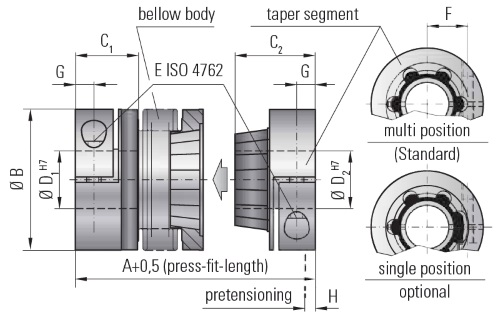By Zak Khan
Bellows couplings are most useful when connecting two components that experience perpendicular displacement about their shafts or components that undergo axial displacement often induced by thermal changes.
Bellows couplings are torsionally rigid, so they can transfer rotation, but are laterally flexible, to accommodate misalignments. They have low moments of inertia and often minimal restoring forces.
Frequently, designers choose bellows couplings as a part of a precision positioning system. That is, within systems that involve servomotors, stepper motors and automation. This is because they transfer rotation efficiently while engineers can incorporate components, such as encoders.
Because bellows couplings are so efficient at transmitting torque, they are useful in situations in which inertia ratios are a concern. As bellows couplings have such low moments of inertia themselves, they do not contribute much to the inertia of a motor. This is useful for precise positioning systems where stalls or skips are a concern.
Another reason to use bellows couplings is in high RPM situations. As RPM values get higher, vibration becomes a concern. This is especially a concern if resonance occurs. Bellows couplings can help reduce these vibrations because of their flexible nature. Rather than being transferred to the system, vibrations are dispelled via the coupling.
The thin walls of a bellows coupling are also useful when there is a potential that the meeting between two shafts is not completely horizontal at all times. While ideally, motion systems should maintain such horizontal connections because they are most efficient, how practically achievable this is at all times varies. Instead of a rigid bearing, that would fail if the two shafts moved, bellows couplings can flex without breaking the connection. This allows for momentary out-of-plane deformations to occur without having to worry if the whole system is in danger of failing.
When considering a bellows coupling, remember that regardless of their remarkable flexibility and ability to accommodate misalignments, best practices are still to match components as closely as possible.
